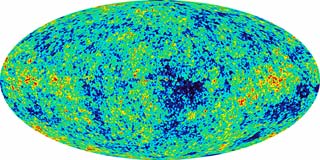
|
Introduction to Cosmology Dr Martin Hendry 10 lectures, starting January 2005 |

(Short-cut to lecture notes and
handouts)
COURSE MATERIAL
The course
material will be delivered via detailed handouts, which will be
distributed at the start of each section. These handouts are
designed to summarise the contents of the course in a convenient and
concise manner: everything you need to know for 'Introduction to
Cosmology' is contained
within them. Do not, however, make the fatal mistake of
regarding
the handouts as a substitute for attending the lectures.
Each handout has a number of 'gaps',
into which you will need to write various facts and figures which will
be revealed and discussed as the lectures unfold. There is also a
wide right-hand margin on each handout in which you are encouraged to
make your own notes and comments during the lectures, or afterwards as
you revise. (I have added the occasional note myself, which will
appear on screen in the lectures, but not on your handout).
Martin Hendry,
January 2005
| Course Handouts (student
version: pdf format) |
Section
1 |
Section
2 |
Section
3 |
Section
4 |
| Course Handouts (lecture
version, minus figures) |
Section
1 |
Section
2 |
Section
3 |
Section
4 |
| Figures from Handouts
(warning, large files!) |
Section
1 |
Section
2 |
Section
3 |
Section
4 |
| Additional Handouts |
Parallax |
Magnitudes |
Doppler shifts |
|
Some Interesting WWW Links relating to
Cosmology
Click here to link to the homepage of the Hubble Space Telescope
Click here to link to the website of the World's Largest Optical Telescopes
Click here to link to the ESO Very Large Telescope homepage
Click here to link
to the homepage of the HST Key Project
to measure the expansion rate of the Universe (i.e. the Hubble constant)
Click here to link
to the homepage of the 2DF Galaxy Redshift Survey
Click here to link to the
homepage of the Sloan Digital Sky Survey
Click here to link to the homepage of the Supernova Cosmology Project, to measure the curvature of the universe using very distant supernovae
Click here to link
to the homepage of the Wilkinson Microwave
Anisotropy Probe, which has recently
measured very accurately temperature fluctuations in the Cosmic
Microwave
Background Radiation (CMBR)
Click here to link to Max Tegmark's CMBR data analysis centre, where temperature variations in the CMBR are studied as a probe of the cosmological model and of galaxy formation (very technical, but great animations and movies)
Click here to link to the homepage of the VIRGO Consortium, who are running very large computer simulations of galaxy formation.
Click here to link to the Astronomy Picture of the Day website
Click here to link to the homepage of Heavens Above (for info on the ISS and Iridium flashes visible in your area)
Click here to link to the
homepage of Starry Night Backyard,
a very good astronomical display program. (Something to put on your
Christmas list!)
Please send any comments or questions on ITC to Martin Hendry